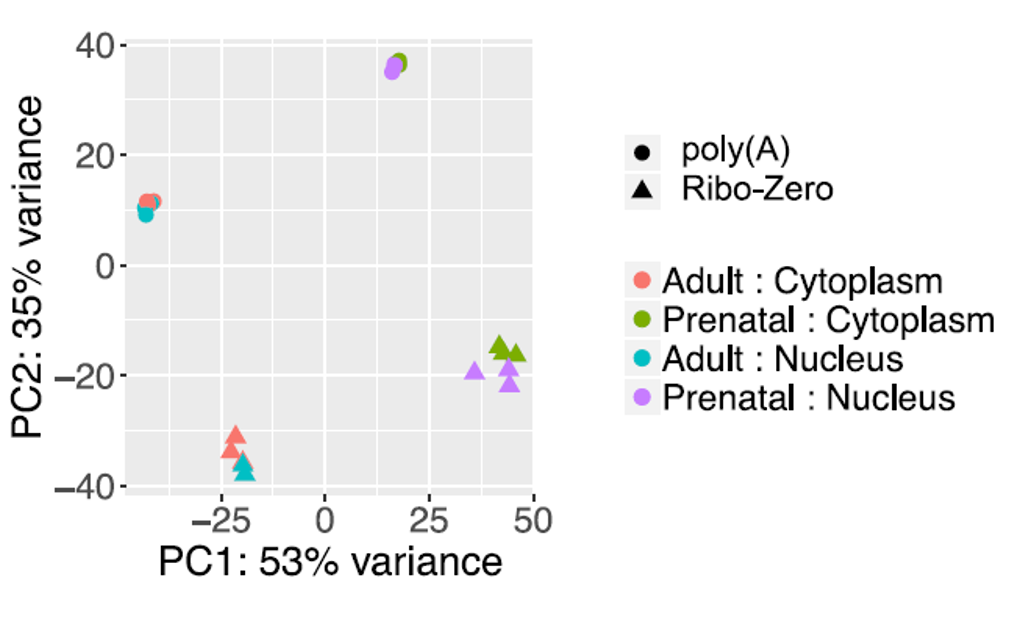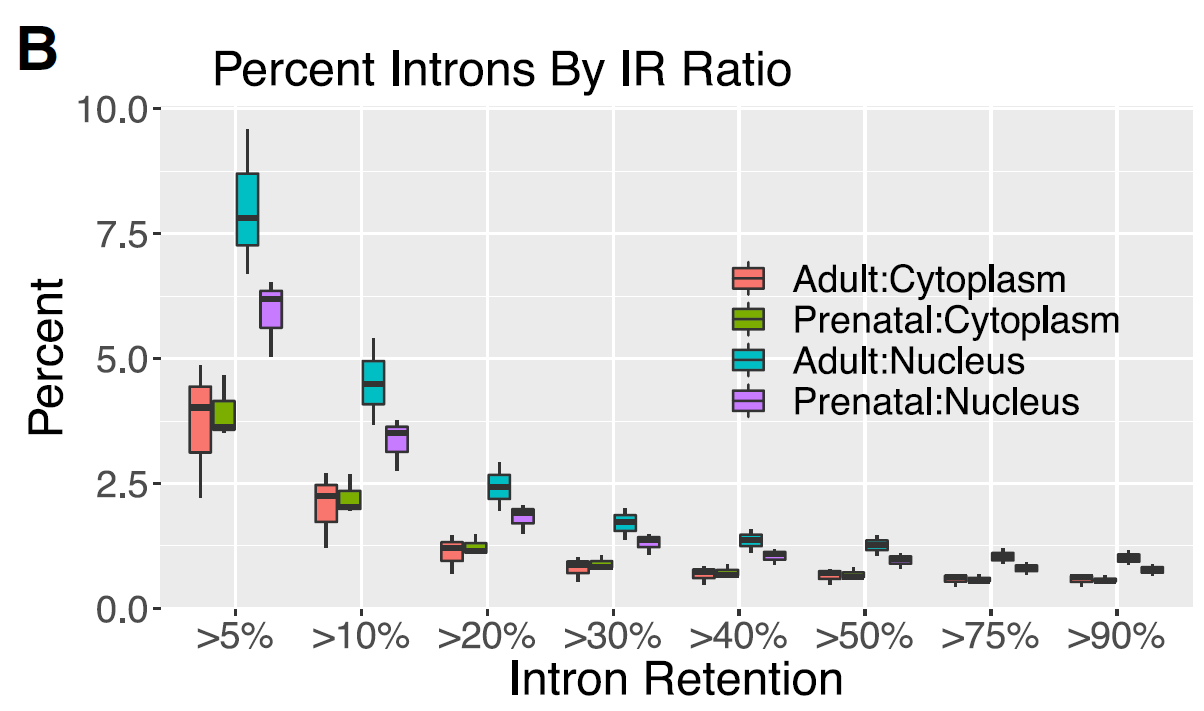2020-03-29 by Quick Biology Inc.
The brain is the most complex organ in humans, no matter in anatomy level, cell level, or molecule biology level. It has numerous types of cells that function differently, it also has enriched activity of gene expression, pre-mRNA alternative splicing. Understanding molecule mechanism regulation of the brain is vital both in human mental disorders, in high cognition of humans in primate brain evolution.
In recent Genome Biology, researchers in Lieber Institute for Brain Development sequenced nuclear and cytoplasmic RNA from three prenatal and three adults human DLPFC (dorsolateral prefrontal cortex) region using poly(A)+ and Ribo-zero library preparation methods (Fig.1, ref1). Un-surprisingly, major changes in gene profiling were due to different brain development stage. While looking at the data deeply, they showed that prenatal and adult cortex had distinct patterns of RNA localization, i.e in nucleus and cytoplasm (Fig.2). Interestingly, these nuclear-enriched genes were preferentially enriched in genes associated with neurodevelopmental psychiatric disorders. Characterizing these dynamics of RNA localization (such as intron retention, Fig.3) between nucleus and cytoplasm might help for the etiology of brain disorders.
Figure 1: Developmental gene expression changes are similar in nuclear and cytoplasmic RNA. Principal component analysis of global RNA seq data. PC1 separates the samples by age and PC2 separates the samples by library type so that nuclear and cytoplasmic samples from the same donors cluster together. (ref1)

Figure 2: Prenatal and adult human cortex show distinct patterns of RNA localization. MA plots of prenatal and adult gene expression across RNA fraction. (ref1)

Figure 3: Intron retention associates with RNA distribution. (ref1)

Quick Biology is an expert in whole transcriptome sequencing. Find More at Quick Biology.
Ref:
1. Price, A. J. et al. Characterizing the nuclear and cytoplasmic transcriptomes in developing and mature human cortex uncovers new insight into psychiatric disease gene regulation. Genome Res. 30, 1–11 (2020).



